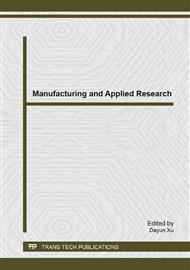p.166
p.170
p.174
p.179
p.185
p.192
p.198
p.204
p.210
Systematic Simulation Method for the Calculation of Maximum Deflections in Peripheral Milling of Thin-Walled Workpieces with Flexible Iterative Algorithms
Abstract:
Due to the deflection of tool and workpiece induced by cutting force, there is a high complexity associated with the prediction of surface form errors in the peripheral milling process of thin-walled workpieces. And the prediction of surface form errors induced by cutting deflection is the precondition for process optimization and error compensation. This paper proposes a systematic simulation procedure suitable for surface form errors prediction in peripheral milling of low rigid thin-walled workpiece. Some key algorithms with the judgment of contacts between the cutter and the workpiece, the flexible iterative algorithm as well as the tool/workpieces deflection prediction using FE model are developed and presented in detail. Comparisons of the form errors and cutting forces obtained numerically and experimentally confirm the validity of the proposed algorithms and simulation procedure.
Info:
Periodical:
Pages:
185-191
Citation:
Online since:
March 2014
Authors:
Price:
Сopyright:
© 2014 Trans Tech Publications Ltd. All Rights Reserved
Share:
Citation:


